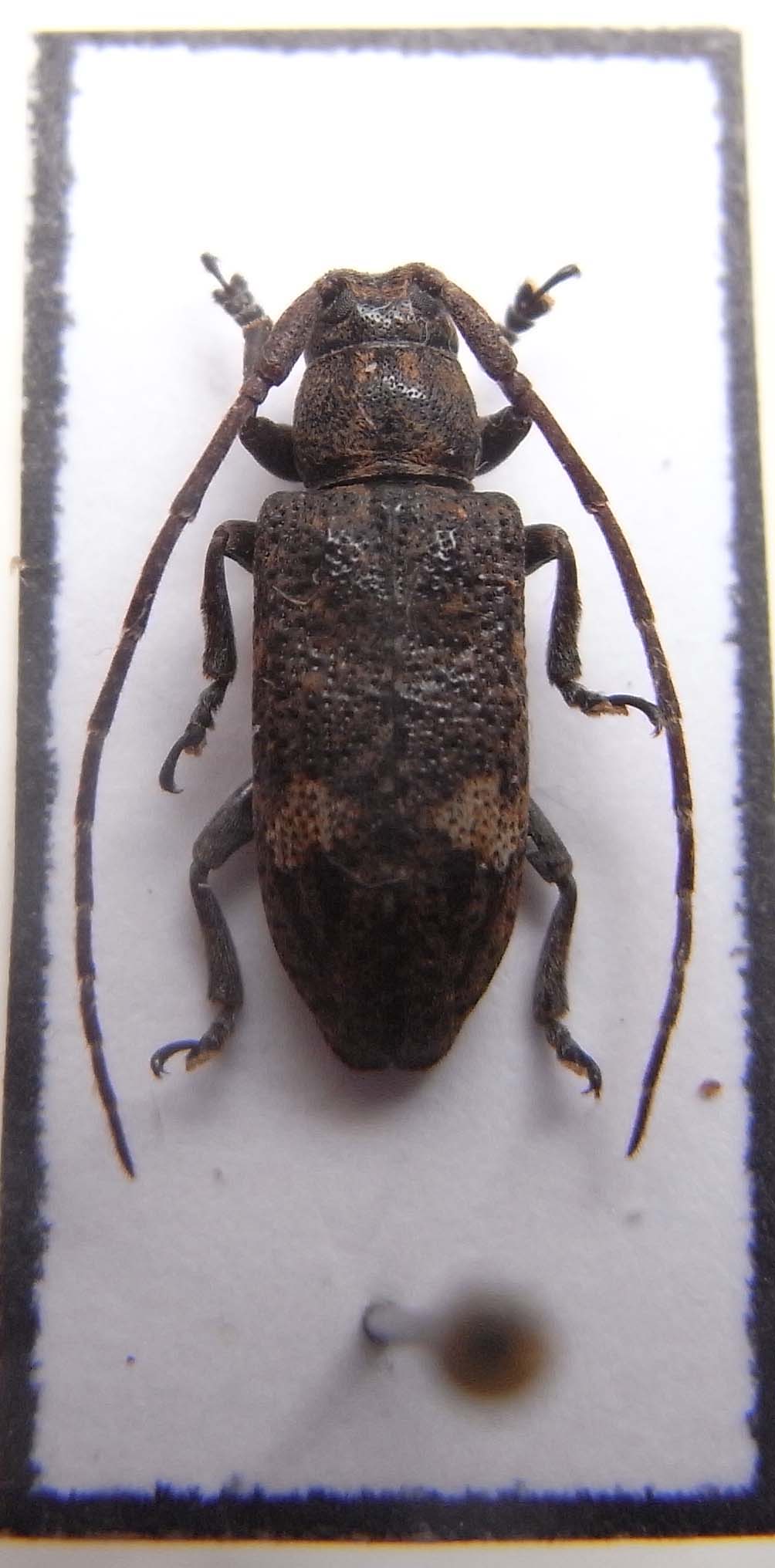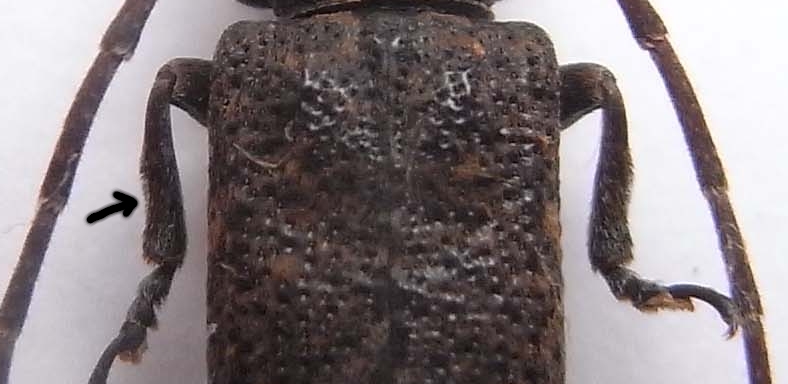| T O P I C R E V I E W |
| Xavier |
Posted - 27/10/2010 : 15:33:38

Bonjour,
Je n'ai aucun document (dans la digital library) pour ce petit Lamiinae, 9 mm, MacLeod Ganj, Himachal Pradesh, nord Inde.
Je peux essayer d' améliorer la photographie.
Si quelqu'un a une idée...
Merci |
| 13 L A T E S T R E P L I E S (Newest First) |
| Francesco |
Posted - 15/09/2012 : 13:12:59
Nickel! |
| Xavier |
Posted - 15/09/2012 : 10:30:18
Oui ! Mcleod ganj est en montagne,au dessus de Darhamsala, à 2000m d'altitude. |
| Francesco |
Posted - 15/09/2012 : 10:15:07
Yes.
Selon Andre il s'agit d'une espèce montagnarde. Ça correspond? |
| Xavier |
Posted - 15/09/2012 : 10:08:18
So, It could be Ropica rosti Breuning, 1958? (I try to understand German)...
My small species, collected 11 years ago near a river where monks where taking a bath, on Carduus sp., has got a name!
Thanks a lot gentlemen! |
| Francesco |
Posted - 15/09/2012 : 09:40:28
Wunderbar!
Es scheint mir, dass es keinen Zweifel (für das Moment) gibt. |
| Andre |
Posted - 15/09/2012 : 08:48:09

Hallo Francesco
Das ist der Typ aus der Coll. Frey (Foto: A.Weigel).
Ropica indica kenne ich nicht. Ropica rosti ist vermutlich mehr in höheren Lagen verbreitet (Kashmir, Himachal Pradesh und Nepal) oder sogar ein Synonym von R. indica. |
| Francesco |
Posted - 15/09/2012 : 07:47:46

Also hatte ich die Einschnürung richtig gesehen!
Von rosti habe ich nur die Breunings Beschreibung von 1964 (nur ein Exemplar, 7 mm lang); hast du mal weitere Auskünfte?
Denn diese Art scheint mir kaum trennbar von R. indica (sie auch für einem Exemplar bekannt)... |
| Andre |
Posted - 15/09/2012 : 00:21:12
Es sollte sich um Ropica rosti Breuning, 1958 handeln.
Wurde aus Kashmir beschrieben und kommt bis nach Nepal vor.
Allerdings sind solche "Prognosen" bei derart schwierigen Gattungen gewagt. |
| Xavier |
Posted - 27/10/2010 : 20:25:15
Merci !
Pterolophia sp. , c'est déjà une bonne avancée.
|
| Francesco |
Posted - 27/10/2010 : 19:08:42
En effet il est un peu grand pour une Ropica.
Il s'agit alors d'une petite Pterolophia comme la angusta. Il sera encore plus difficile l'identifier... |
| Xavier |
Posted - 27/10/2010 : 17:15:36
Il n'a pas les tibias intermédiaires échancrés. Les yeux sont totalement divisés. |
| Francesco |
Posted - 27/10/2010 : 16:59:06
Il me semble plutôt appartenir au genre Ropica Pascoe, 1858 (Apomecynini).
La différence entre ces deux tribus sont les tibias intermédiaires échancrées (caractère qui manque dans la tribu primitive des Pteroplini).
S'il est comme ça, il sera difficile l'identifier, parce que il y a un grand nombre d'espèces (164!) toutes semblables entre elles… |
| Xavier |
Posted - 27/10/2010 : 16:02:20
...un Pteropliini peut-être ? |


